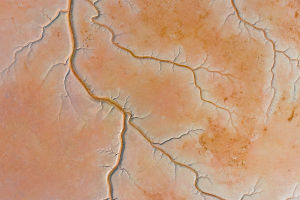The Snowy Mountains are named because of the constant snow, so why do they have snow all the time? Because of the high altitude of the mountain tops and the thin air, although the solar radiation is high, the reflection from the ground is also strong.
What is more important is that most of the long wave radiation from the ground runs directly into cosmic space due to the lack of insulation from water vapour and carbon dioxide, so that wi.th the increase in altitude, the temperature has to drop by 6 degrees per kilometre.
When the mountain is high enough, the mid-year temperature at the summit is below 0 degrees, making it difficult for snow and ice to melt
Some of the world's most famous snow-capped mountains are as follows
1. Cerro Torre is located near the small town of El Chalten in Argentina and although it is only 3,128 metres high, its pin-point shape makes it stand out from the many snow-capped mountains around it.
2. Chogori Peak, also known as K2, is the second highest peak in the world at 8,612m. Located in the Karakorum Mountains on the border between China and Pakistan, Chogori's changeable weather and steep profile make it far more difficult and deadly to climb than Everest. The annual climbing mortality rate is also a horrific 30%, and less than 10 people have climbed to the summit in China.
3.Okawaguchi Tower, at 6,286m, and with its large, almost vertical rock face, makes Okawaguchi Tower one of the most challenging peaks in the world.
4. 6997m Fishtail Peak (Machhapuchhre) is located in the Annapurna range in Nepal. Named for its resemblance to a fish's tail, it is one of the sacred mountains of the region.
The world's most difficult snow-capped mountains.
The first is Mount Chogori, the second is Mount Kawagbo, or Meili Snow Mountain in Yunnan, which is the first of the "sacred mountains" in the hearts of Tibetans and is said to be denied to humans. In 1991, 17 people were killed on a Sino-Japanese expedition, and almost no one has ever reached the summit.
In third place is Nanga Parbat, which is only the ninth highest peak in the world, but which has been climbed every year with a death rate of 25%, and which was only reached for the first time in 1953, but before that 31 people had already died.
Lastly, Everest, the world's highest mountain, is known to have a year-round temperature of -34°C. Although there is a constant stream of climbers who come to climb it, many people die in the middle of the climb or give up every year, especially because the weather is so changeable that many people die on the way down, which is why Everest cannot be climbed overnight.


